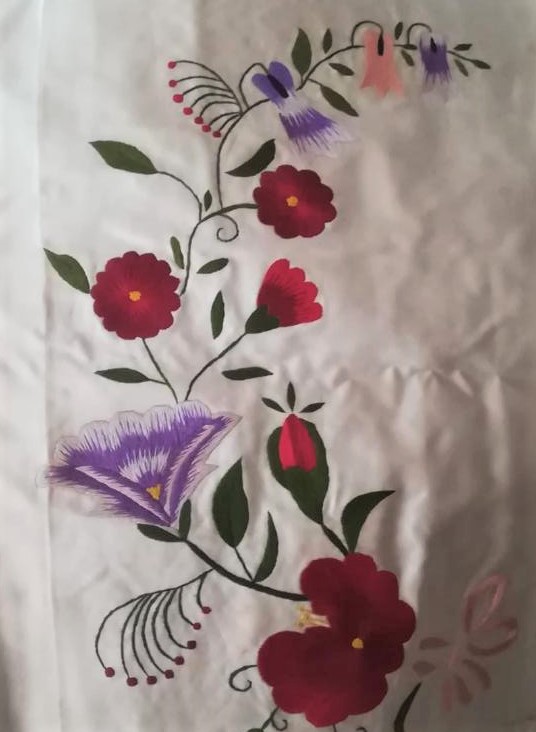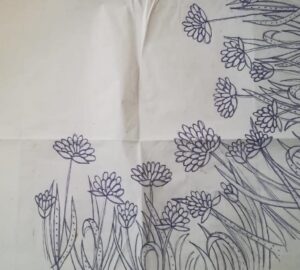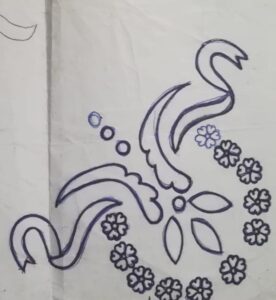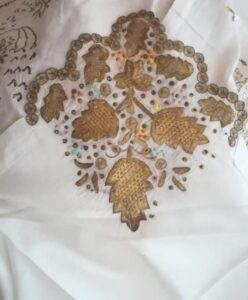Traditional embroidery in Shkodra is applied with needlework switching on different fabrics such as: silk, linen, organdy, canvas, poplin, cotton fabrics, etc.
Embroidery is done with cotton, silk, gold, and silver thread.
Types of embroidery techniques:
The “Needlepoint” embroidery is worked on light silk fabric (canvas), in a traditional four-leg square quilting/embroidery hoop, so that the silk fabric remains stiff. When working with silk thread, a single-eye needle is used; when silver and gold threads are used, a two-eye needle is used.
The “Shadow” embroidery which involves working on a piece of organdie or organza fabric, is a kind of silk fabric mixed with cotton, which appears diaphanous; this type of fabric was once used to make barnavek (wide-legged pants). Embroidery through this technique is practiced on a circular quilting hoop. On the front side of the fabric the work goes straight, while on the reverse side, it is worked with the cross technique. Given the lightweight and diaphanous fabric, the reverse side gives a shadowy effect on the front side of the fabric from which the technique derived its name.
The “Yrme” or “Lattice” embroidery is applied on linen (cotton) or poplin, drawing out a thread from a square fabric; these squares are later embroidered with cotton yarn, thereby creating a lattice-like appearance from which this embroidery type has derived its name.
The “Cross” embroidery is the type most often used, as it goes faster, and produces pleasing work. It is worked on Aida cloth or x-shaped squares fabric and orderly adjusted colors weave, for example, 4 in red thread, 5 in cherry thread, 6 in yellow thread, and so on.
The “Stick, Chain” embroidery, etc., is a work employing and presenting a composite pattern of all the above techniques and is rather straightforward.
Floral patterns are dominant in traditional Shkodra embroidery patterns. Floral patterns stand out for their bright and enthusiastic colors.





